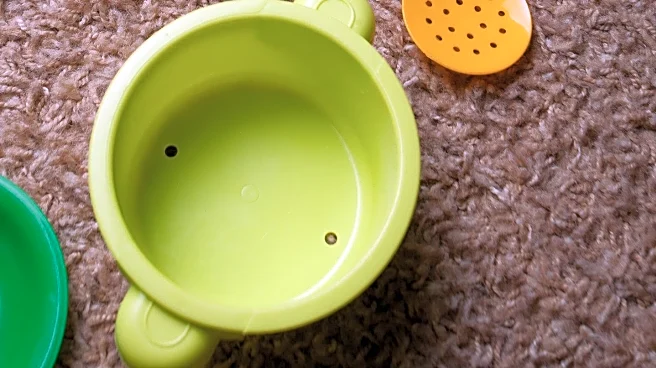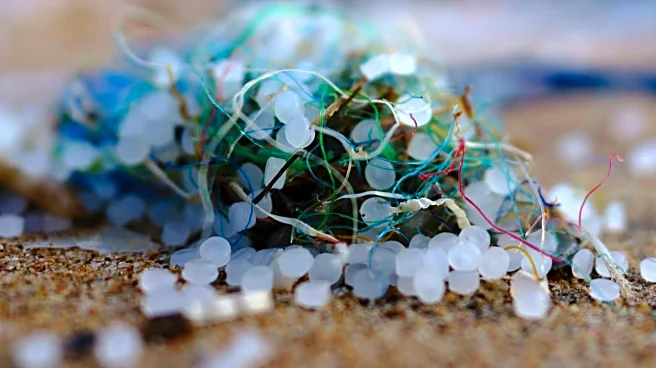What's Happening?
A recent study has highlighted the presence of microplastics in kitchenware, including nonstick cookware and plastic food containers, which release these particles into food during cooking. The study found that Teflon-coated cookware and plastic utensils are significant sources of microplastic contamination, especially when exposed to high heat. Additionally, plastic packaging for spices and canned food linings contribute to microplastic exposure. The study emphasizes the widespread nature of microplastics in everyday kitchen items and their potential health risks, including cardiovascular and respiratory issues.
Why It's Important?
The findings underscore the potential health risks associated with microplastics, which have been linked to serious conditions such as heart attacks and strokes. This revelation may prompt consumers to reconsider their kitchenware choices and opt for alternatives like stainless steel or glass containers. The kitchenware industry could face increased scrutiny and demand for safer products, potentially leading to innovation in materials and design. Public health policies might evolve to address microplastic contamination, influencing manufacturing standards and consumer safety regulations.
What's Next?
Consumers may begin to shift towards using non-plastic kitchenware to reduce microplastic exposure. The industry might see a rise in demand for eco-friendly and non-toxic products. Regulatory bodies could implement stricter guidelines for kitchenware manufacturing to minimize microplastic contamination. Awareness campaigns may be launched to educate the public on the risks of microplastics and promote safer kitchen practices.
Beyond the Headlines
The issue of microplastics in kitchenware raises broader questions about environmental sustainability and consumer health. It highlights the need for industries to adopt greener practices and for consumers to be more conscious of their choices. This could lead to a cultural shift towards more sustainable living and increased advocacy for environmental protection.











